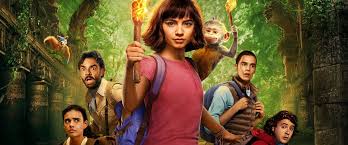The greatest art fraud of the twentieth century is examined in Driven to Abstraction, a documentary by Daria Price. Over a period of fifteen years, the Knoedler, the oldest and one of the most prestigious art gallery in New York, sold $80 million dollars worth of forgeries. Among the artists whose works were forged are a who?s who of modern American: Jackson Pollock, Mark Rothko, Robert Motherwell, and many others.
As the story is told it seems very obvious to the viewer that a large fraud was taking place. Several previously unknown works by well known artists slowly trickled into this one gallery. There was, of course, a story about why this was happening, focusing on a mysterious Mr. X, Jr. His father might have been Mexican, or Filipino, but moved to Switzerland. Now Mr. X. Jr. was cashing in some of the art his father had collected. This may seem ridiculous on its face to viewers, but we also learn that anonymity is very common in the art world. One of the people in the film says that art is one of the largest unregulated markets in the world.
What was really going on, as we learn as the film unfolds and eventually a court case plays out, is that the works were all made by one Chinese artist living in New York, Pei-Shen Qian. A small-time art dealer, Giafira Rosales, would bring the pictures to the Knoedler where Ann Freedman, the gallery director would find buyers. Of course, provenance is an important aspect of selling art. An authentic art work should have a paper trail. Freedman would have carefully worded lists of people who had seen the art, implying but not saying that they verified its authenticity.
It is easy to look back at this and see the red flags that should have been obvious. But we never learn why various people didn?t pay attention. This is a world of wealth and secrecy. It is only when the trial takes place that we see just how deep the fraud was. But the trial in many ways is inconclusive, because the parties settled before the end of the trial without those who knew what was happening telling what they knew and when. It raises questions of not just who was responsible, but also what constitutes responsibility in such situations.
The film also raises questions of what it means to be a villain or a victim. In this story, it could be that our first impressions may be distorted. Are people acting out of greed or hubris? Are they under the power of others and must keep doing what they have been even if they suspect wrongdoing? Are they so caught up in the world of money that they don?t want to see what should be obvious? Or do people tend to portray themselves as victims when they have acted badly? All those questions are possible by the time we get to the end of this story.




